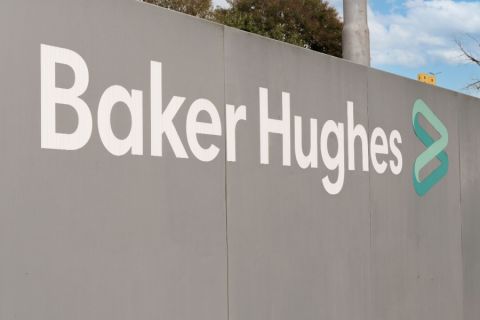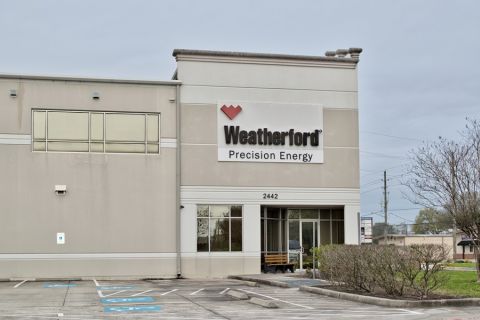Presented by:
[Editor's note: A version of this story appears in Capital Formation 2021, a supplement to Oil and Gas Investor magazine. Subscribe to the magazine here.]
After a tumultuous, unprecedented year for oil and gas markets, commodity prices have returned to a level of relative stability. Similarly, the freeze in equity and debt investment in the oil and gas industry appears to be thawing.
While markets seem to be reopening, the effects of the pandemic and other geopolitical developments have had lasting results on how deals get done as well as the terms and negotiation of deals going forward. While the beginning of 2021 shows many reasons for optimism, it is important to be aware of how the previous year’s developments have affected the negotiation and structuring of deals as well as the rise of alternative deal structures and new market participants growing out of this turbulent period.
When commodity prices collapsed in 2020, deals ground to a halt and everyone shifted their focus from growth to survival. While the public equity markets had spurned the oil and gas industry for a while, private equity investors similarly stopped investing and focused on managing through a downturn. The pressures of low prices coupled with ESG headwinds made new equity capital extremely hard to find.
As a result, oil and gas companies had to focus on operating within cash flow. Instead of focusing on development and expanding (or even holding) acreage, the dominant theme became cost reduction. Meanwhile, equity sponsors enforced discipline on their portfolio companies, became laser-focused on G&A matters and forced a number of equity-backed companies to combine.
Similarly, the sources of debt for oil and gas companies grew fewer and fewer in 2020. Most borrowers under reserve-based loan facilities (RBLs) experienced significant reductions to their borrowing bases. These cuts were first put in motion by the oil price war set off in early 2020 and exacerbated by the global uncertainty created by the pandemic. In connection with these borrowing base decreases, many lender groups began requiring term loan-style amortization payments on overdrawn balances resulting from the reductions.
The widespread implementation of these plans revealed a conservative outlook by lender groups in assuming that the overdrawn portions of the borrowing bases were not likely to return and an acknowledgment by borrowers that they did not have other sources of liquidity. That is in stark contrast to previous downturns in which many overexposed borrowers sold midstream assets, gathering systems and other noncore assets to pay for overexposure resulting from borrowing base reductions triggered by decreased commodity prices.
Additionally, there were very few high-yield issuances for oil and gas issuers during the tumultuous 2020. The high-yield market for oil and gas producers had been challenging for a couple of years leading into 2020, but after the onset of the pandemic, the number of high-yield offerings further contracted in second-quarter 2020.
Debt and equity source improvements
As pricing has improved in 2021, so has the availability of equity capital. Private equity funds still are having challenges raising investor capital for oil and gas, but there are numerous funds that have undeployed capital. The criteria for attractive deals are much higher than before, but funds with capital have a strong incentive to invest that money. Today’s improved commodity pricing is causing the logjam, slowly, to break open.
Even with stronger prices, deals that were attractive in the past may not pass muster. Every investor would love to find a distressed seller unloading a great asset at a bargain price, but that is not a common occurrence. Instead, savvy investors are looking for opportunities to purchase assets that are underperforming or could create potential upside valuation through consolidation. Look for more non-cash mergers, where parties combine to reduce expenses and share opportunities, sometimes coupled with the sponsor of one or the other combined entities committing to fund and expand the combined enterprise.
On the debt side, both high-yield note issuance and leverage lending have sharply rebounded through the first quarter of 2021. The proceeds of high-yield issuances in the first quarter have been robust, already exceeding the total from two quarters of 2020. This robust market has at least put a dent in the much-touted “maturity wall” that has been a point of concern for the oil and gas debt markets for the past few years. Moreover, thanks to the prevalence of low interest rates globally, the pricing on many of these high-yield debt issuances is very reasonable, with pricing ranging in the area of 6% to 8% for high-yield notes.
Additionally, the reductions in borrowing bases for RBLs had largely ceased in the second half of 2020 (in many cases due to pre-agreed payment plans in connection with negotiations resulting from first-half 2020 borrowing base redeterminations). Also, there is still debt availability from strategic lenders that have been in the market for oil and gas borrowers, but the more favorable conditions have made them more eager to deploy loan funds.
Private equity funds still are having challenges raising investor capital for oil and gas, but there are numerous funds that have undeployed capital.
Lasting developments
While the investment climate has improved, the scars of 2020 will affect future deals. For one thing, expect equity investors to be more cautious about leverage. While leverage will still help increase returns, the extreme volatility in commodity prices has shown how quickly equity can be out of the market. Lenders might feel some schadenfreude over this trend, as they also felt a lot of pain and similarly have become more cautious.
Equity also will be less bullish in modeling base case returns. As a result, expect investors to be less willing to share outsized returns with management. In a way, many investments will become more conventional and less entrepreneurial, with investors targeting somewhat lower returns but with less downside risk, and expect terms for management similarly to be less rich in the upside case but perhaps more secure on the downside.
Additionally, investors will likely insist on more control and consent rights. Ultimately, as capital frees up, more competition will return for deal flow, and terms will start to loosen up again. But for the immediate future, equity investors will be very focused on doing all they can to ensure that their investments are operating in a disciplined manner. Don’t expect a lot of investors to swing for the fences—most of them will be thrilled to put doubles and triples on the board in 2021.
The outlook for the debt sources is also better than a year ago, but the lessons learned will continue to affect deal structures. The expectation for the first-half 2021 borrowing base redetermination season is that most borrowing bases will be confirmed at their existing amounts. In many cases, the engineering and strip of the borrower’s assets may warrant an increase to the borrowing base, but due to other continuing lender group dynamics (such as some lenders simply wanting to exit the industry), it is still difficult for borrowers to achieve the 100% lender approval that is necessary for an increase to a borrowing base.
Going forward in 2021, there may be some relaxation of some of the more stringent covenants in loan agreements that were put in place in connection with the first-half 2020 redeterminations, and eventually there should be a realignment of lender groups to exclude uncooperative lenders. However, it is likely the free-cash-flow covenants and metrics will remain in many RBL credit facilities.
New types of debt facilities
During 2020, there were some whispers the RBL was dead or at least obsolescent. It is too early to make any firm conclusions, but that prognostication now looks incorrect. The more likely outcome will be the resurgence of this long-used debt instrument (although for the near term it is likely to include lender protections implemented during 2020) as the prices of oil and gas increase and volatility decreases.
However, there is an argument that the term loan should remain a part of an oil and gas producer’s capital structure. Many borrowers may wish to mitigate the risk to their capital structure attendant with having all of their secured debt subject to adjustments, partial acceleration and mandatory prepayment obligations. Additionally, lenders may wish to assess the credit of a borrower differently than the near-total reliance on a reserve report.
Undoubtedly, lenders use the “black box” of borrowing base redeterminations to include other factors (aside from engineered PDP values and strip or hedged prices) in coming up with the borrowing base. But it would create more transparency and predictability for both lenders and borrowers to create term loans sized to match predictable free cash flow (without assuming future increases in PDP reserves). Such term loans could be coupled with a smaller RBL to be used for working capital and expansion purposes.
Along these lines, some oil and gas companies are seeking to completely sever and package the portion of assets that are expected to produce in a predictable fashion. With a predictable production profile, robust and long-term hedging, adequate confidence in the operator and other investor protections, oil and gas producers are seeking to tap into another investor class through securitization of oil and gas assets. While this product is still in its infancy, conceptually it is another useful tool to consider in developing the go-forward capital stack of oil and gas companies.
SPACs: A source of equity
The flurry of special purpose acquisition company (SPAC) IPOs also has created a lot of excitement. While many SPACs focus on the energy transition, a number of sponsors have raised SPACs focused on the oil and gas industry. The potential targets for an oil and gas-focused SPAC are many, and access to a large pool of equity capital will prove irresistible for many companies.
Whether SPACs in the oil and gas space are a wave of the future or just a tumultuous tsunami that crashes and retreats over the horizon remains to be seen and will depend on how the newly public de-SPACed companies perform. But in either case, these vehicles will play a major role in the M&A space in 2021.
The fundamentals
The return of debt and equity sources to the oil and gas space is more than welcome, but the lessons learned, both by investors and operators, will remain in one form or another in the near future. Equity investors will be more conservative in their base case and focus more on the fundamentals rather than speculative upside scenarios. In both debt and equity investments, expect market participants to continue to keep an eye on fundamentals, especially free cash flow. Expect most debt sources to continue to be focused on adequate hedging, especially taking advantage of recent commodity price improvement.
Cliff Vrielink is an energy finance attorney and is the global leader of the energy and infrastructure practice with Sidley Austin LLP. Attorney Daniel Allison focuses on commercial lending and other complex commercial finance and energy transactions. Both are partners in Sidley’s Houston office.
Recommended Reading
ProPetro Ups Share Repurchases by $100MM
2024-04-25 - ProPetro Holding Corp. is increasing its share repurchase program to a total of $200 million of common shares.
Baker Hughes Hikes Quarterly Dividend
2024-04-25 - Baker Hughes Co. increased its quarterly dividend by 11% year-over-year.
Weatherford M&A Efforts Focused on Integration, Not Scale
2024-04-25 - Services company Weatherford International executives are focused on making deals that, regardless of size or scale, can be integrated into the business, President and CEO Girish Saligram said.
Range Resources Holds Production Steady in 1Q 2024
2024-04-24 - NGLs are providing a boost for Range Resources as the company waits for natural gas demand to rebound.
Hess Midstream Increases Class A Distribution
2024-04-24 - Hess Midstream has increased its quarterly distribution per Class A share by approximately 45% since the first quarter of 2021.






